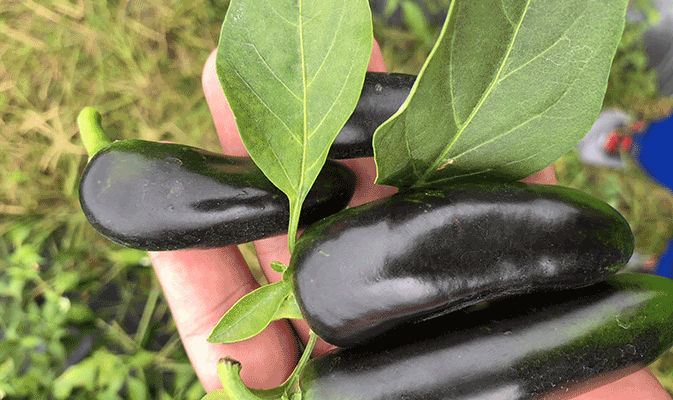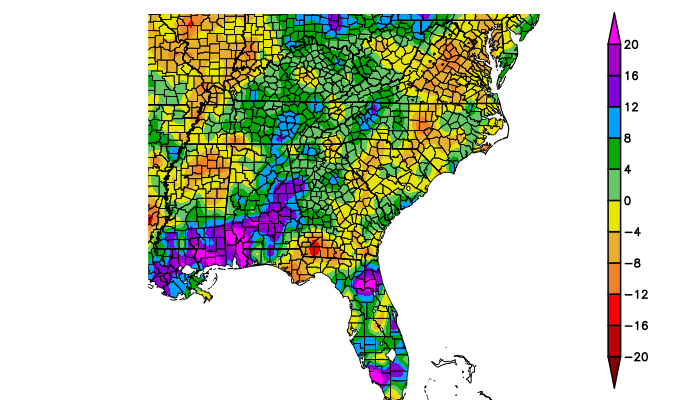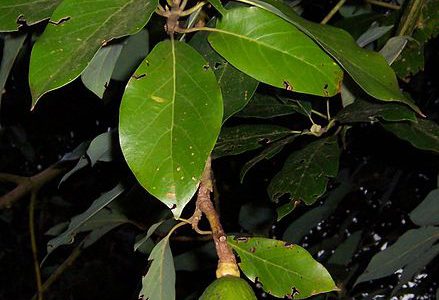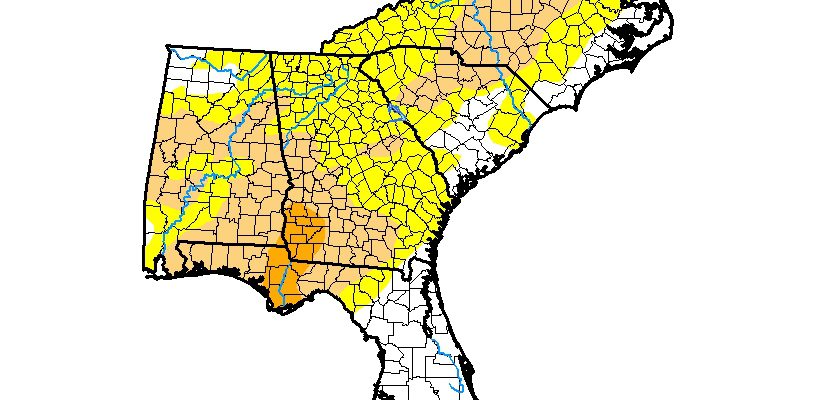-

The USDA has announced the availability of a new GIS-based plant hardiness zone map, which is zoomable and is based on 1976-2005 data. You can read more about it at https://planthardiness.ars.usda.gov/PHZMWeb/AboutWhatsNew.aspx. You can access the map at the link above by clicking on Interactive Map on the top menu or go directly to it at https://planthardiness.ars.usda.gov/PHZMWeb/InteractiveMap.aspx.
-

The latest 7-day QPF map shows that most of the Southeast will have only a little precipitation this week, with some areas receiving none at all. The cold temperatures will minimize loss from evaporation but the lack of water may contribute to increasing the drought in next week’s Drought Monitor.
Posted in: Climate outlooks -

The Packer reported this week that cold temperatures and rain in the Southeast have delayed harvest and discolored peppers in Florida and decreased yields in cucumbers, eggplant and squash. In the Northeast, icy roads slowed the movement of trucks through the region. In California, fires and mudslides caused problems for crops like avocados and shut…
-

The latest climate summary for 2017 was just issued by the Southeast Regional Climate Center. You can access it at https://sercc.com/climateinfo_files/monthly/southeast_monthly_report/southeast20171_12.pdf.
Posted in: Climate summaries -

The latest outlook on La Niña was released by NOAA this week. It’s a look at the current state of ENSO (the see-saw that occurs between El Niño and La Niña and a discussion of what a double-dip La Niña is as well as a forecast for what to expect next. It also shows how…
-

While this is only tangentially related to climate, it’s an interesting story about avocados anyway. Atlas Obscura provides another quirky tale of odd things from the past. In this case, how avocados developed and spread with the help of giant and now extinct giant land sloths. You can read the story here.
-

After another week with below-normal rain, the National Drought Monitor has introduced severe (D2) drought to parts of Georgia and Florida along with a tiny corner of Alabama. Moderate drought has also expanded as well as abnormally dry conditions, so now over 3/4 of the region is covered by dry conditions. The only exceptions are…
Posted in: Drought